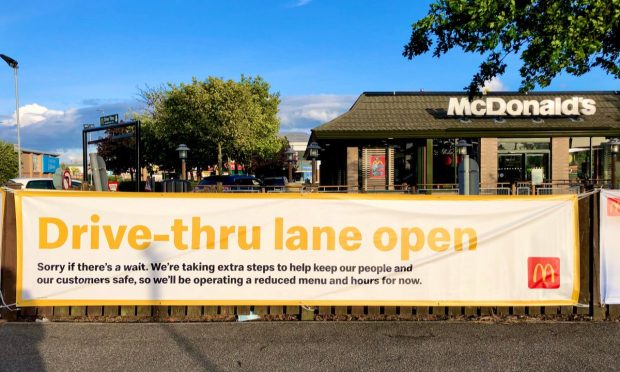Amid Safety Concerns, McDonald’s Suggests Franchisees Shift from Dine-In to Safer, More Profitable Channels

With the rise in COVID-19 cases, McDonald’s is turning its focus to its off-premises channels. New cases are up about tenfold from just two months ago, making indoor dining less safe and less appealing to many consumers. Noting this trend, McDonald’s corporate office is suggesting that franchisees close dining rooms in areas where transmission is high.
“We have a much deeper sense of what actions make a difference for the safety of our restaurant teams and crew,” McDonald’s USA President Joe Erlinger told franchisees last week, per materials obtained by Reuters.
Specifically, the company recommended that franchisees in areas where more than 250 people out of 100,000 have the virus close indoor dining areas. These locations will continue to offer drive-thru, pickup and delivery. These closures may have an added benefit, given the labor market that restaurants are facing today. In fact, last week, it was reported that several Chick-fil-A franchisee locations were closing their dining rooms, keeping drive-thrus open, due to labor conditions.
See also: Restaurants Adapt For Workforce With Fewer Humans, More Robots
McDonald’s move to encourage dining room closures prompts locations that do so to deploy their workforce toward the chain’s more profitable channels. A report from restaurant analytics company Delaget found that, in 2020, the drive-thru channel captured 82 percent of consumers’ spending at quick-service restaurants (QSRs). Even pre-pandemic, two-thirds of sales came through drive-thru during 2019. Additionally, research featured in the May edition of PYMNTS’ Order to Eat report created in collaboration with Paytronix finds that more than 1 in 4 already-vaccinated restaurant customers would be encouraged to spend more on their food orders if the restaurant offered drive-thru pickup.
Related news: The Key Features That Helped Clean Juice Keep Sales Flowing
“We’re monitoring the impact of the Delta variant closely and recently convened together with our franchisees to underscore existing safety protocols, reinforce our people first approach and provide updates on the rise in cases in the country,” McDonald’s said in a statement.
Despite the strength of the channel, McDonald’s drive-thrus have taken a hit in recent months, impacted by the labor shortage. On a call with analysts at the end of July, McDonald’s President and CEO Chris Kempczinski noted that the company has been unable to follow through on its goals to cut down drive-thru wait times, citing “staffing challenges.” On the same call, he predicted that, by Labor Day, “barring resurgences,” nearly 100 percent of the chain’s dining rooms would have reopened.
In the U.S., 95 percent of McDonald’s restaurants have drive-thrus. As restaurants begin closing dining rooms again, and as consumers shift their ordering habits toward off-premises channels, the question emerges of whether dine-in has a place in QSRs’ futures. After all, the channel is a more efficient use of real estate and drives the bulk of these locations’ sales. However, Kempczinski believes that on-premises dining will continue to play a vital role in the restaurant’s future, serving a necessary function for consumers.
“I think dine-in is always going to be here,” he told CNBC earlier this summer. “Eating is such a social experience, and dine-in is a part of that social experience.”
